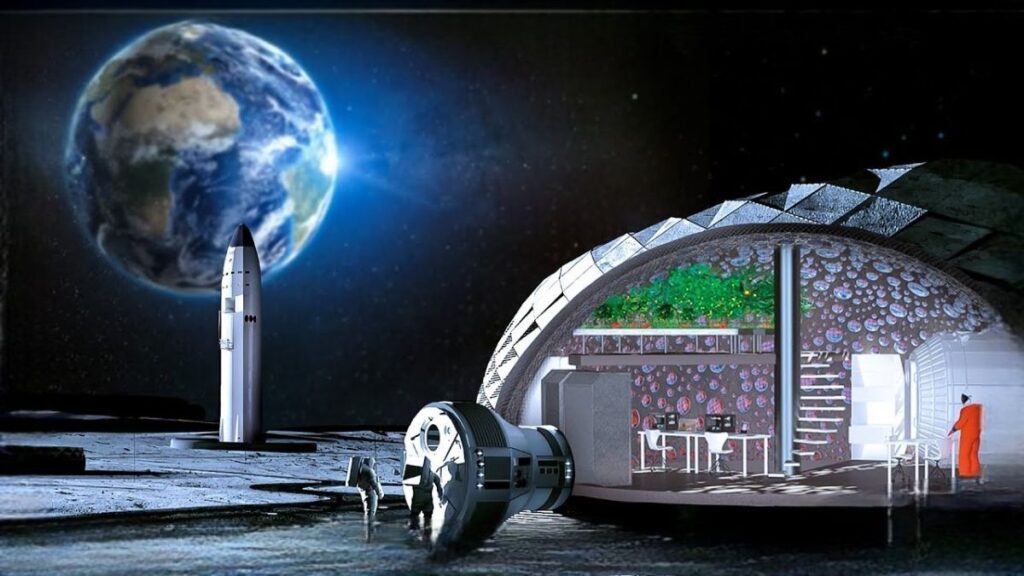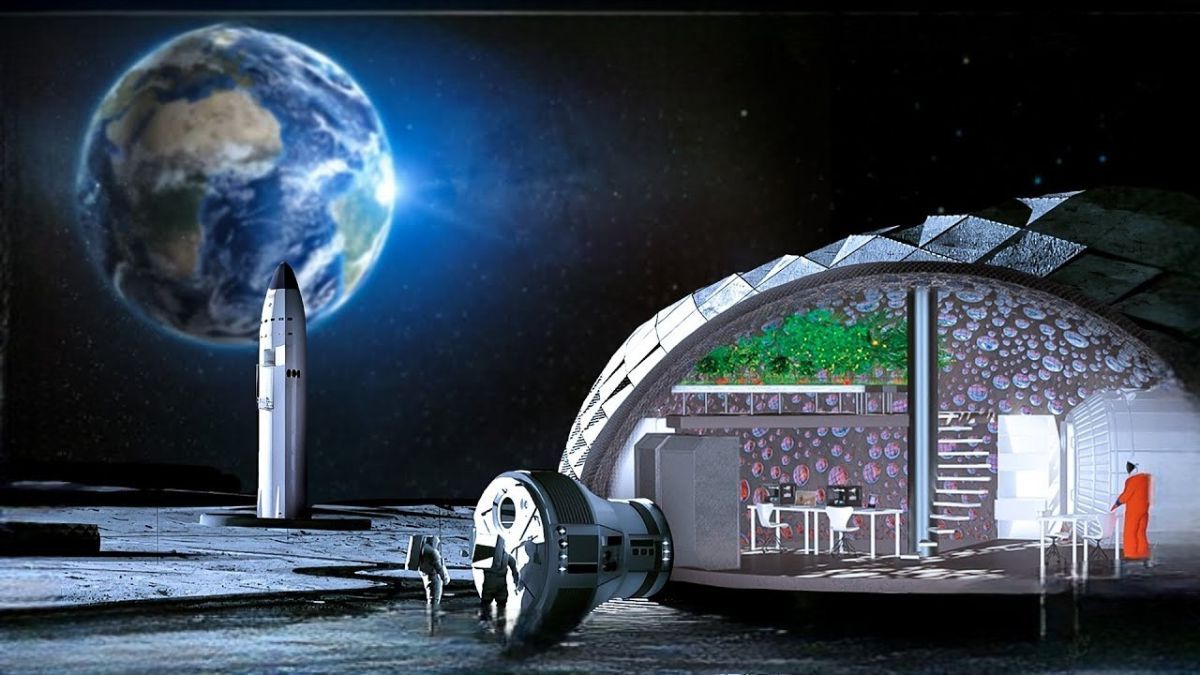
Since NASA’s first uncrewed mission to the moon, Artemis, was successful recently, work on long-term solutions to support human activity on the lunar surface has accelerated rapidly. Although the SLS and Orion spacecraft’s flight testing is a significant milestone, it is only the beginning of a very complicated plan to establish the first permanent settlement on the moon.
As more partnerships from the private sector are incorporated into NASA’s strategy for the Artemis program in order to assist in the creation of future technologies for space exploration, the strategy is constantly evolving. It goes without saying that SpaceX plays a significant role in the development of their human landing system, Starship. Additionally, recent developments have revealed plans for 3D-printed habitats, extravehicular space suits, pipelines, and roads on the moon. So we should make up for lost time with NASA’s new arrangement for their most memorable moon base.
This is a race for space. We are aware that NASA’s Artemis 3 mission will carry out the first human return to the moon, which is anticipated to occur as early as 2026. More recently, NASA has confirmed that they will carry out a second crude landing with Artemis 4 as soon as 2027. A variant of the SpaceX Starship, which serves as the human landing system for both missions, will be used to complete these excursions to the lunar surface. For five days, this lander will be the base of operations for two astronauts. This will significantly surpass the previous record for the longest time spent on the moon, which was 75 hours, set in 1972 by the Apollo 17 crew.
On these early explorations, the Starship’s 9-meter-diameter hull and towering height will provide NASA with comfortable and spacious living quarters. However, merely residing in the Starship is not sufficient to establish a long-term human presence on the moon. For the next decade of Artemis missions, which will eventually see a crew of four astronauts live on the moon for up to one month at a time, they need a real plan to build infrastructure. Kathy Luters, the Associate Administrator of NASA, has promised that astronauts will become more familiar with their capabilities to explore and study the Moon on each subsequent mission. “With more demand for access to the Moon, we are developing the technologies to achieve an unprecedented human and robotic presence 240,000 miles from home,” Luters wrote in a statement. The decade we spent on the Moon will prepare us for a greater adventure elsewhere in the universe: human investigation of Mars.”
NASA announced a new plan to install pipe on the moon in January 2023. A significant first step toward establishing in-situ resource utilization would be the installation of the oxygen pipeline at the lunar South Pole, which would be the first permanent human infrastructure up there. The pipeline’s purpose is to transport oxygen of high purity from a production source to a storage facility close to the future moon base.
NASA has already developed a method they will use to extract specific elements from the lunar dust, which already contains a significant amount of oxygen, known as molten regolith electrolysis, or MRE. The oxygen will be used to supply human habitats, pressurized rovers, and even launch vehicles leaving the moon as oxidizer propellant. The energy required to move the stored oxygen around the surface on rovers would actually be more intensive than the energy required to extract the oxygen, rendering the entire process unsustainable, which is why NASA wants to construct a pipeline. As a result, NASA has proposed a five-kilometer pipeline.
Additionally, NASA is developing the xEMU, a new generation of extravehicular activity (EVA) spacesuits, in order to support longer and more diverse lunar surface missions. While offering astronauts greater mobility and flexibility, the xEMU will be able to withstand extreme temperatures, radiation, and dust. Astronauts will be able to carry out a wider range of scientific experiments and explore more of the moon’s surface with these new suits.
NASA is expanding its capabilities in space exploration through partnerships with private businesses in addition to the development of infrastructure and technology. SpaceX plays a significant role in these alliances because it supplies the human landing system for the Artemis missions. Dynetics and Blue Origin are also working on lunar landers for NASA.
NASA is committed to making the ambitious and complicated plan of establishing a permanent human presence on the moon a reality. NASA is making significant progress toward this objective through the creation of new technologies, partnerships with private businesses, and a dedicated group of scientists and engineers. A new era of space exploration and discovery is just beginning with the Artemis program.







![Moon Jellyfish has [ Hidden Secrets ] You don't know moon jellyfish](https://spaceupper.com/wp-content/uploads/2022/11/1-1.jpg)